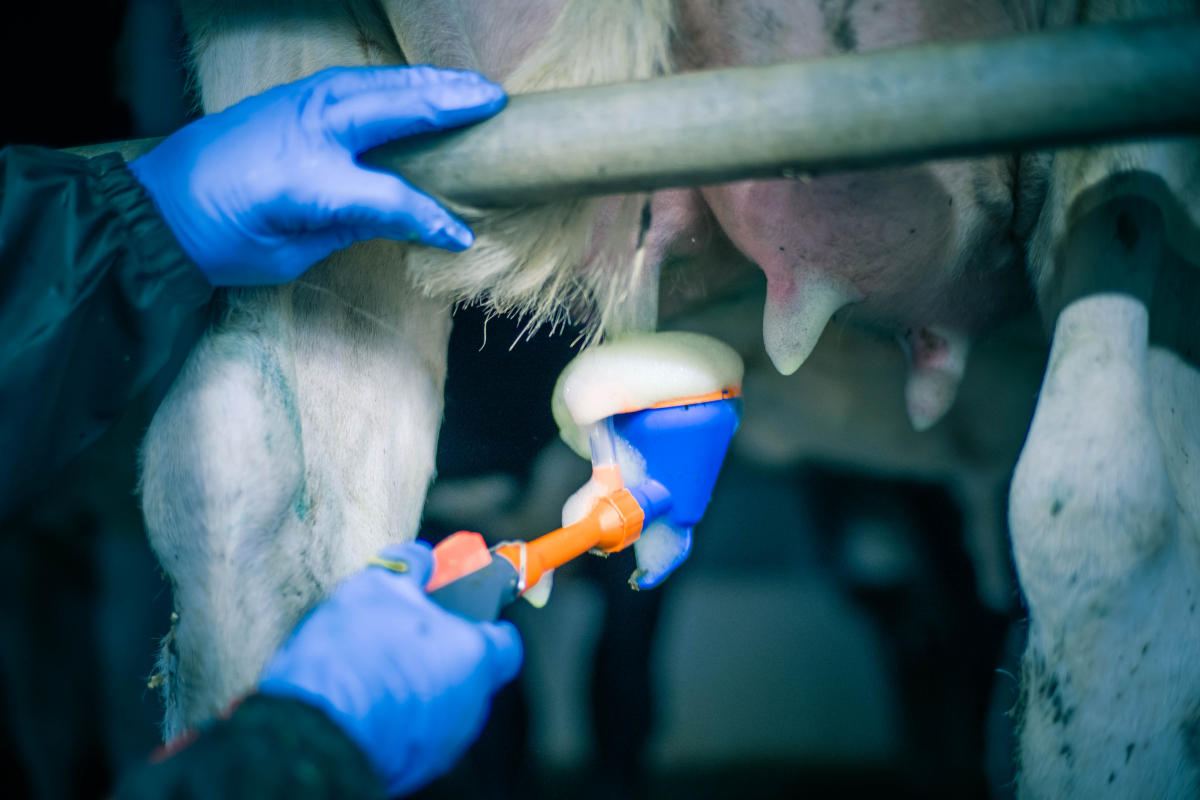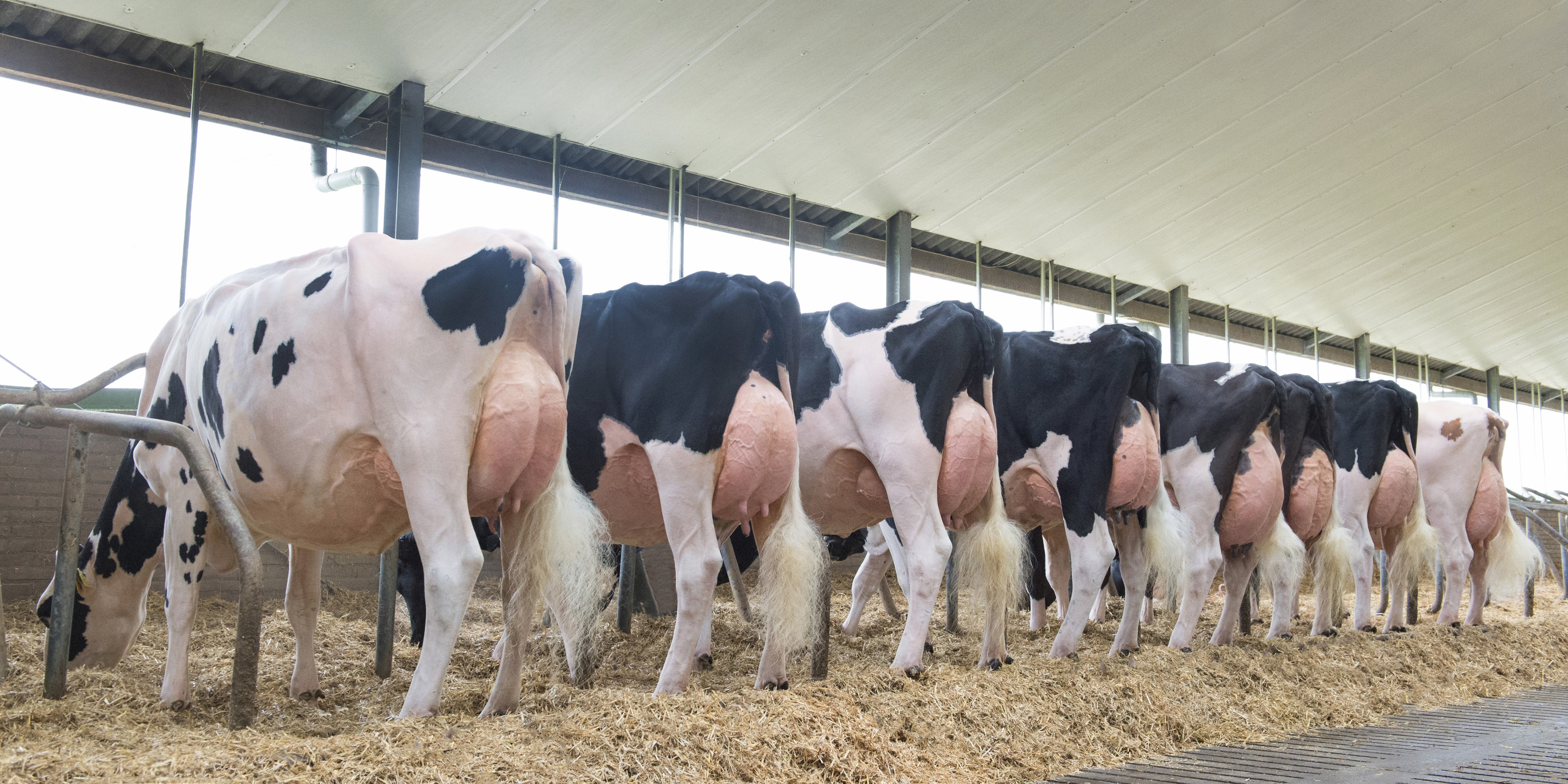

HOW TO PREVENT MASTITIS
You can trust CID LINES, An Ecolab Company to give you the tools you need to protect your farm against the negative impacts of Mastitis.
Mastitis is an inflammation of the mammary gland, associated with a bacterial infection. It is caused by pathogenic microorganisms that enter the udder through the teat canal. Mammary tissue is then damaged, which causes increased vascular permeability. As a result of this, the milk composition changes.
There are two types of mastitis:
-
Clinical mastitis is an inflammatory response to infection causing visibly abnormal milk (eg. color, fibrin clots). As the extent of the inflammation increases, changes in the udder (swelling, heat, pain, redness) may also appear.
-
Subclinical mastitis is the type of mastitis without any visible signs of infection. Subclinical mastitis is the most prevalent form of mastitis. Detection of subclinical mastitis is best done by examination of milk for somatic cell counts using either the California Mastitis Test or automated methods. Somatic cell counts are correlated with the presence of infection. Cows with a somatic cell count of ≥280,000 cells/ml have more than 80% chance of being infected. Likewise, the higher the somatic cell count in a herd bulk tank, the higher the prevalence of infection the herd.
Accurate udder hygiene the first step in keeping mastitis out of the farm.
There are three at risk periods when cows are more vulnerable to be infected with mastitis:
-
- during milking, if teat preparation is not optimal,
-
- after milking, if a cow has open sphincters and lies down in a dirty area
-
- during the dry period
 During milking, cows “share” the milking machine and it can be a source of contamination from one cow to another cow or one quarter to another quarter. That’s why cleaning and disinfecting the teats before milking is very important to reduce the infection pressure.
During milking, cows “share” the milking machine and it can be a source of contamination from one cow to another cow or one quarter to another quarter. That’s why cleaning and disinfecting the teats before milking is very important to reduce the infection pressure.
Despite a good knowledge of the pathology, the cost of both clinical and subclinical mastitis is often ignored or underestimated. Although direct consequences (udder damages) and direct costs (cost of treatment, veterinarian fees and time spent to treat animals) of mastitis are obvious, indirect consequences and costs are often neglected despite their bigger economic impact.
The economic loss from one single case of clinical mastitis in Western Europe ranges from 200 - 300 euros. The major cost component of the total economic loss caused by subclinical mastitis is reduced milk production for the current lactation.
Think hygiene, think teat dips!
Check the teat skin condition!
Teat skin condition is an important parameter of a mastitis control strategy. Chapped and cracked teats are a perfect environment for bacteria to develop: warmth, humidity and nutrition are available. Germs like Staphylococcus aureus or Streptococcus agalactiae like to colonize these places. Consequently the quarter easily gets contaminated: directly (propagation of the germs) or indirectly (via milking machine contamination).

Teat preparation
By cleaning the udder before attaching the milking unit, the udder is well prepared. During this preparation, oxytocin can be released, thus the total time of milking is less. Another advantage of pre-treatment is: that it decreases the risk of contamination due to environmental pathogens.
Post-treatment of teats
After milking, the risk of contamination is high because the sphincter is open and can stay open up to 2 hours after milking. The teat canal is the primary physical and chemical barrier to invasion of mastitis pathogens into the udder. The smooth muscles surrounding the teat duct should be contracted and the teat canal should be tightly closed between milking to avoid bacterial passage from the teat orifice into the interior of the gland. A teat end in good condition is an important resistance factor to bacterial colonization of the mammary gland.
The ideal teat dip provides excellent teat condition, facilitates sphincter closure and has a strong disinfectant activity. The coverage is homogenous around the teat because of its perfect viscosity.
Biocidal teat dips
Products need to have key characteristics to accomplish their mission:
-
Fast acting and persistent bactericidal activity on micro-organisms such as Staphylococcus aureus, Streptococcus uberis and Escherichia coli.
-
High teat conditioning properties with a specific combination of emollients in order to improve or maintain optimum condition of the teats skin and encourage natural healing.
Medicinal teat dips 
Veterinary medicines need to comply with several restrictions. The raw materials for example that are used for these products need to have a quality guarantee, complying with the European Pharmacopoeia. Several stability studies are an extra hurdle to reach the veterinary medicine status. The National Mastitis Council states that the rate of new intra-mammary infection can be 50% lower when disinfecting teats with an effective product immediately after every milking compared to no disinfection. Teat disinfection does not affect existing mammary gland infections but may reduce colonization of the teat-ducts.